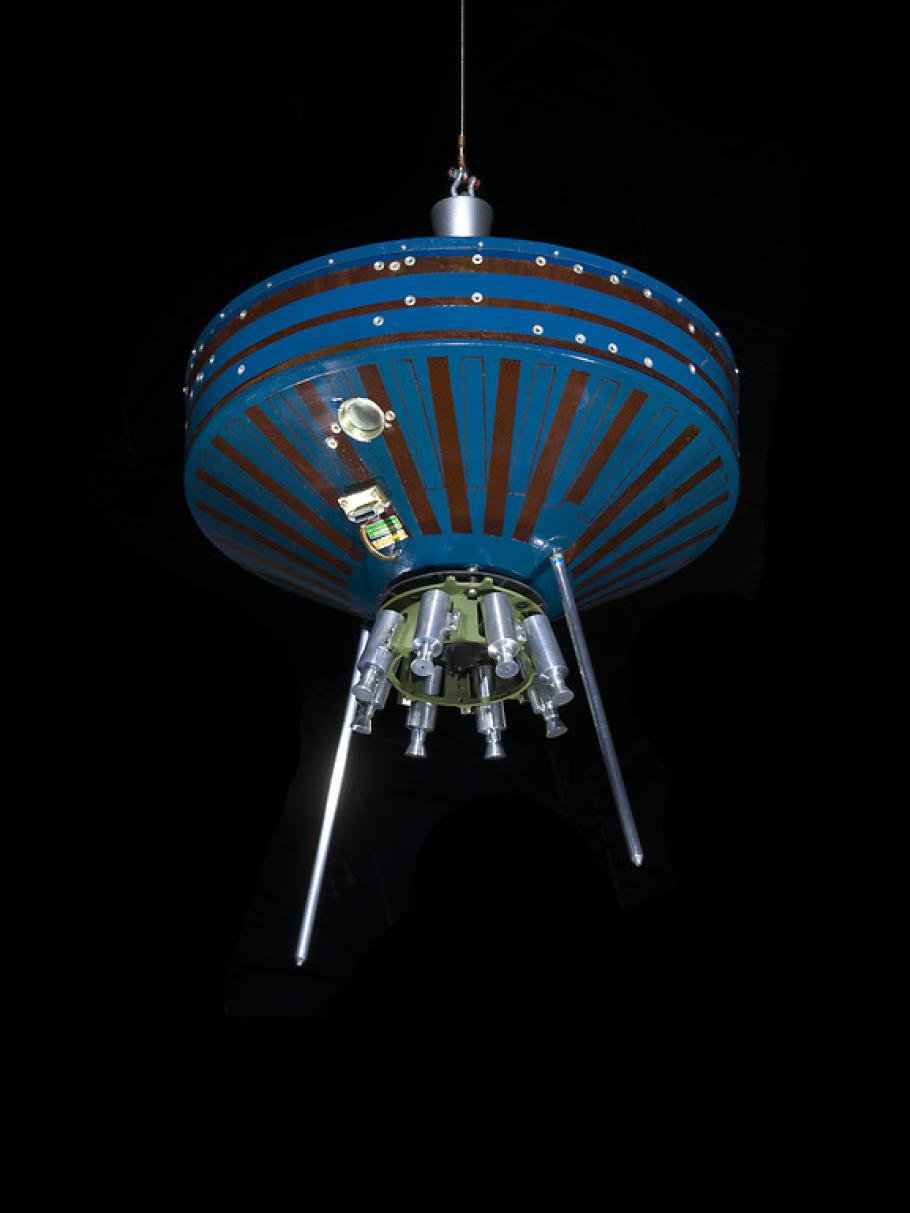This is a replica of a Pioneer satellite intended to orbit the moon. Pioneer 1 was launched on October 11, 1958, but the final velocity was insufficient to escape the earth's gravity. The resulting trajectory took the satellite to an altitude of 70,700 mi. During the flight, the spacecraft transmitted 43 hours of scientific data. It burned up upon reentry into the earth's atmosphere two days later. This replica was assembled in 1963 by the prime contractor, Space Technology Laboratories Inc (TRW) from original parts that failed to meet flight specifications. It was displayed at the Los Angeles Museum of Science until February 1964 and then donated to the Smithsonian Institution by TRW. It was displayed in the NASM Satellites gallery from 1976 to 1983, loaned to the Scottish Museum from May to December 1984, and then was part of a SI Traveling exhibition. It is now in display storage at the Hazy Center.
Display Status
This object is on display in Destination Moon at the National Air and Space Museum in Washington, DC.

Object Details
Country of Origin
United States of America
Type
SPACECRAFT-Uncrewed-Guidance & Control
Manufacturer
TRW Space & Technology Group
Dimensions
Overall: 2 ft. 5 in. wide x 2 ft. 6 in. deep, 24 lb. (73.7 x 76.2cm, 10.9kg)
Materials
Shell - laminated plastic
Aluminum
Paint
Adhesive Tape
Plastic
Copper Alloy
Adhesive Sticker
Alternate Name
Pioneer 1 satellite
Inventory Number
A19640665000
Credit Line
Gift of TRW Space Technology Laboratories
Data Source
National Air and Space Museum
Restrictions & Rights
Open Access (CCO)
For more information, visit the Smithsonians Terms of Use.

